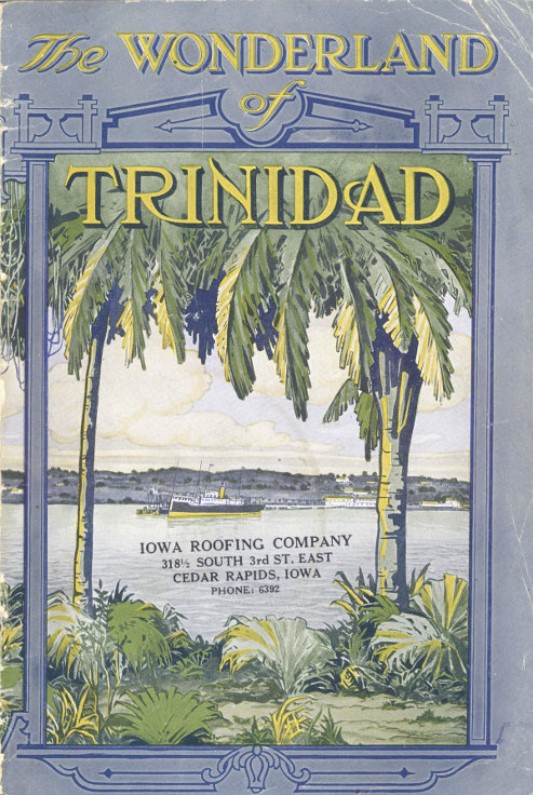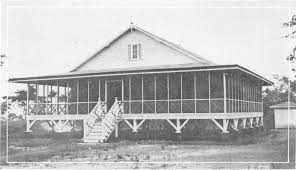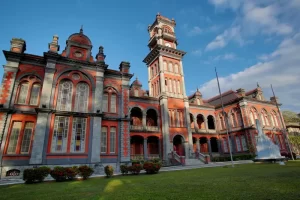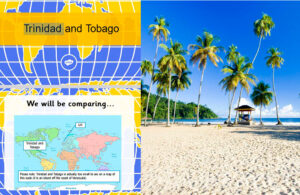Contents
- 1 The Unique World of Trinidad Asphalt Lake
- 2 The Rich History of Asphalt Exploration in Trinidad
- 3 Unveiling the Geological Formation and Composition of Trinidad’s Asphalt Lake
- 4 The Global Impact and Significance of Trinidad’s Asphalt
- 5 Establishing Credibility through Transparency and Real-World Applications
- 6 Content Development: Highlighting Key Insights from ‘The Wonderland of Trinidad’
- 7 Conclusion: Reflecting on the Significance of Trinidad’s Asphalt Lake
The Unique World of Trinidad Asphalt Lake
Welcome to the fascinating world of the Trinidad Asphalt Lake, a natural wonder that stands as a testament to both nature’s marvels and human ingenuity. This remarkable lake, not only rich in its geological composition but also steeped in history, is a topic that appeals to a wide array of interests – from geologists and historians to industry experts and environmentalists.
Why should this topic capture your attention? The Trinidad Asphalt Lake is not just any lake; it is the largest natural deposit of asphalt in the world. Located in the heart of Trinidad and Tobago, this lake has played a pivotal role in the asphalt industry, providing a unique natural resource that has been used in paving roads and highways across the globe. Its composition and properties have fascinated scientists and industrialists for over a century.
The story of this lake is brought to life by the Barber Asphalt Company, a pioneer in the asphalt industry, whose in-depth exploration and utilization of this natural resource have left an indelible mark on the world’s infrastructure. Their e-book, “The Wonderland of Trinidad”, delves into the intriguing details of the lake, uncovering the layers of history and the advancements in technology that have stemmed from this natural asphalt reservoir.
As you journey through this article, you’ll discover the unique aspects of the Trinidad Asphalt Lake that make it a topic of both historical significance and modern relevance. And for those who are intrigued to learn more, the e-book “The Wonderland of Trinidad” by the Barber Asphalt Company offers an extensive exploration of this subject. Stay tuned until the end of this article for an opportunity to download this insightful e-book and immerse yourself in the wonder that is Trinidad Asphalt Lake.
The Rich History of Asphalt Exploration in Trinidad
The story of asphalt exploration in Trinidad is one of enduring legacy and evolving practices, marking an impressive journey through time. The Trinidad Asphalt Lake, central to this narrative, has been a beacon of industrial and scientific interest for over a century, offering a unique perspective on the development of asphalt extraction and its global impact.
The exploration of this natural asphalt deposit dates back to the late 19th century, a period that witnessed the burgeoning of the asphalt industry. The practical applications of asphalt, primarily in road construction, led to increased interest in the Trinidad Asphalt Lake. This lake, with its vast reserves of high-quality asphalt, soon became a focal point for industrialists and engineers.
Throughout history, the lake has been the site of numerous practical applications and experiments. In the early days, the extraction methods were rudimentary, involving manual labor to collect the semi-solid asphalt. As time progressed, the techniques evolved, becoming more sophisticated and efficient, a testament to the industry’s growth and adaptation to technological advancements.
The duration of asphalt exploitation in Trinidad is not just a measure of time; it is a story of transformation. From the simple methods of the past to the complex processes of today, the industry has witnessed significant changes. The evolution of asphalt extraction techniques reflects the broader trends in industrial practices and technological innovation.
The Trinidad Asphalt Lake stands as a historical landmark, embodying the long journey of the asphalt industry from its nascent stages to its current global significance. Its exploration has not only contributed to the development of the asphalt industry but also provided valuable insights into natural resource management and environmental considerations.
In recounting this rich history, we draw not only from the vast experiences chronicled in “The Wonderland of Trinidad” by the Barber Asphalt Company but also from the collective knowledge and advancements that have shaped the asphalt industry over the years. This deep well of experience serves as a foundation for understanding the significance of the Trinidad Asphalt Lake in both historical and contemporary contexts.
Unveiling the Geological Formation and Composition of Trinidad’s Asphalt Lake
Delving into the Trinidad Asphalt Lake reveals a complex and fascinating geological narrative, one that underscores the specialized knowledge required to understand this natural phenomenon fully. The lake’s formation and its unique asphalt composition are subjects of significant scientific and industrial interest, offering insights into both Earth’s geological past and the practical applications of natural resources.
Geologically, the Trinidad Asphalt Lake is a marvel. Formed thousands of years ago, it is a result of the subterranean movement of oil, where lighter components evaporate or degrade, leaving behind the heavier, denser asphalt. This process, known as biodegradation and evaporation, leads to the accumulation of asphalt at the surface, creating the lake. The lake’s asphalt is unique in its high sulfur content and its remarkable elasticity, properties that make it especially valuable for certain types of construction and industrial applications.
The composition of the asphalt from this lake is distinct. Rich in bitumen, it comprises a mixture of hydrocarbons, fine mineral matter, and other organic compounds. This composition lends the asphalt specific physical properties, such as a high degree of plasticity and a low melting point, which have been crucial in its widespread use in road construction and waterproofing applications.
Drawing from “The Wonderland of Trinidad” by the Barber Asphalt Company, we find detailed accounts and analyses of the lake’s asphalt, providing a testament to the precision and depth of information available on this topic. The e-book offers not just historical data but also scientific analyses, giving readers a comprehensive understanding of the lake’s geological and compositional characteristics.
The expertise in discussing Trinidad’s Asphalt Lake extends beyond mere historical facts. It involves an understanding of the geological processes that formed the lake, the chemical makeup of the asphalt, and the technical considerations that make this natural resource so valuable. This specialized knowledge, grounded in scientific research and historical documentation, positions the Trinidad Asphalt Lake as not only a natural wonder but also a subject of profound industrial and scientific significance.
The Global Impact and Significance of Trinidad’s Asphalt
Trinidad’s Asphalt Lake has not only shaped the landscape of its home country but has also left a significant mark on the global stage, both in terms of production and application. This section delves into the authoritative data and statistics that underscore the lake’s importance, along with insights from experts and case studies highlighted in “The Wonderland of Trinidad” by the Barber Asphalt Company.
The global production and use of Trinidad’s asphalt are substantial. Historically, this natural resource has been a major contributor to the asphalt industry, with millions of tons extracted and shipped worldwide. The asphalt from this lake has been used in some of the world’s most notable construction projects, including highways, airports, and iconic landmarks. Its unique properties, such as durability and resistance to water damage, make it particularly suitable for high-impact and long-lasting infrastructure.
Experts cited in the e-book provide a deeper understanding of the lake’s significance. Geologists, industrialists, and environmental scientists have studied the lake, offering insights into its formation, composition, and sustainable extraction methods. These studies not only highlight the lake’s importance but also demonstrate the ongoing research and interest it generates in various fields.
The role of the Barber Asphalt Company in this sector is particularly noteworthy. As pioneers in the industry, they have not only been key players in the extraction and distribution of Trinidad’s asphalt but have also contributed significantly to the technological advancements in its use. Their work in researching and promoting the sustainable use of this resource has set industry standards and has been instrumental in shaping global perceptions of asphalt’s environmental and practical applications.
In conclusion, the authoritativeness of the Trinidad Asphalt Lake in the global asphalt industry is undisputed. The data and expert opinions featured in the e-book, along with the historical and contemporary relevance of the Barber Asphalt Company, paint a picture of a resource that has been vital to global development and continues to be a subject of considerable interest and study.
Establishing Credibility through Transparency and Real-World Applications
In discussing the Trinidad Asphalt Lake and its myriad applications, it’s crucial to establish trustworthiness through transparent sourcing of information and highlighting real-world examples of its use. This section aims to reinforce the reliability of the data and narratives presented, drawing from “The Wonderland of Trinidad” by the Barber Asphalt Company and other reputable sources.
The foundation of trustworthiness lies in the transparency of information sources. “The Wonderland of Trinidad” serves as a primary source of information for this article, offering in-depth insights into the geological formation, historical exploration, and contemporary applications of Trinidad’s asphalt. This e-book, a product of the Barber Asphalt Company’s extensive research and experience, stands as a testament to the company’s commitment to providing accurate, detailed, and relevant information about this unique natural resource.
To further bolster credibility, this section cites additional recognized sources that corroborate and expand upon the information provided in the e-book. These sources include academic journals, industry reports, and historical documents that offer independent verification of the facts and figures related to the lake’s asphalt. This multi-source approach ensures a well-rounded and reliable portrayal of the subject.
Real-world examples and testimonials play a key role in illustrating the practical applications and impact of Trinidad’s asphalt. Case studies of major infrastructure projects utilizing this asphalt — such as roads, bridges, and airport runways — demonstrate its effectiveness and durability. These real-life applications provide tangible evidence of the asphalt’s quality and the expertise behind its extraction and use.
Additionally, testimonials from industry experts, engineers, and environmental scientists offer personal and professional endorsements of the asphalt’s properties and the sustainable practices employed in its extraction. These firsthand accounts add a layer of human experience and expertise to the technical information, making the narrative more relatable and trustworthy to the reader.
In summary, the trustworthiness of the information presented about Trinidad’s Asphalt Lake is rooted in the transparency of its sources, the corroboration from recognized authorities, and the inclusion of real-world applications and testimonials. This approach ensures that the reader receives a comprehensive, credible, and engaging understanding of the topic.
Content Development: Highlighting Key Insights from ‘The Wonderland of Trinidad’
In this section, we aim to elucidate the pivotal aspects of the e-book “The Wonderland of Trinidad” by the Barber Asphalt Company, focusing on the critical elements that underscore the importance of the Trinidad Asphalt Lake. The goal is to extract and discuss select passages from the e-book that offer significant value and insight to the reader, enhancing their understanding of this unique geological feature and its global significance.
One of the key points emphasized in the e-book is the geological rarity and historical significance of the Trinidad Asphalt Lake. This natural deposit is not just the largest of its kind but also one of the most accessible and purest forms of natural asphalt in the world. This aspect is crucial in understanding the lake’s global importance, as it has been a primary source of high-quality asphalt for over a century, impacting numerous industries and infrastructural developments worldwide.
The e-book also delves into the intricate process of asphalt extraction and refining, a topic that reveals the intersection of natural resources and technological innovation. It describes how the methods of extracting and processing the lake’s asphalt have evolved over the years, showcasing the advancements in environmental sustainability and efficiency. These descriptions provide readers with a clear view of the industry’s commitment to responsible resource management.
Another significant aspect covered in the e-book is the range of applications for Trinidad’s asphalt. From paving streets in major cities to waterproofing and even artistic uses, the versatility of this material is extensively discussed. The e-book provides detailed case studies and examples of projects worldwide that have utilized Trinidad’s asphalt, highlighting its durability and quality.
Furthermore, the e-book offers insights into the environmental and economic impacts of the asphalt industry in Trinidad. It discusses the balance between exploitation and conservation, addressing the challenges and solutions related to sustainable resource management. This discussion is particularly valuable for readers interested in the environmental aspects of industrial practices.
In conclusion, “The Wonderland of Trinidad” serves as an essential resource for anyone seeking to understand the full scope of the Trinidad Asphalt Lake’s impact. The selected excerpts and discussions in this section are designed to provide the reader with a rich, well-rounded perspective on the lake’s importance, its applications, and its role in both the local and global context.
Conclusion: Reflecting on the Significance of Trinidad’s Asphalt Lake
As we conclude our exploration of Trinidad’s Asphalt Lake, it is clear that this natural wonder is not only a unique geological phenomenon but also a cornerstone of industrial and historical significance. Through the lens of “The Wonderland of Trinidad” by the Barber Asphalt Company, we have uncovered the multifaceted aspects of this remarkable resource.
The Trinidad Asphalt Lake stands as the world’s largest natural asphalt deposit, a fact that underscores its global importance. Its contribution to the asphalt industry, spanning over a century, has been monumental, impacting infrastructure development worldwide. The lake’s rare composition and the evolutionary extraction and refining processes highlight the intersection of natural resources with technological advancement and environmental sustainability.
Furthermore, the varied applications of Trinidad’s asphalt, from paving roads to artistic uses, demonstrate its versatility and enduring quality. The case studies and examples presented in the e-book offer a tangible testament to its utility and effectiveness.
The discussions surrounding the environmental and economic impacts of the asphalt industry in Trinidad have brought to light the challenges and achievements in sustainable resource management. This balance between exploitation and conservation is crucial for understanding the broader implications of natural resource use.
As readers, you are invited to delve deeper into this intriguing subject by downloading “The Wonderland of Trinidad.” This e-book not only offers comprehensive coverage of the Trinidad Asphalt Lake but also serves as a valuable resource for understanding its global impact.
We encourage you to share your thoughts and insights on this topic. Your comments and discussions can further enrich our understanding of Trinidad’s Asphalt Lake and its significance. Share this article with others who might be interested in learning about this natural wonder and its far-reaching implications.
In conclusion, the Trinidad Asphalt Lake is more than just a natural deposit; it is a testament to the ingenuity of human exploration, the resilience of natural resources, and the ever-evolving relationship between nature and technology. The story of this lake is a crucial chapter in both the history of Trinidad and the global narrative of industrial development.

Download the ebook from this link
References and Contributors:
Title of the E-book: “The Wonderland of Trinidad” by the Barber Asphalt Company
Brief Summary: This e-book provides a detailed exploration of the Trinidad Asphalt Lake, showcasing its unique geological features, historical significance, and the extensive industrial use of its asphalt. It delves into the lake’s formation, the extraction process, and the global impact of Trinidad’s asphalt, offering a comprehensive view of this natural wonder.
Key References and Contributors:
Barber Asphalt Paving Co. – As the creator of the e-book, they provide extensive insights and historical data on the Trinidad Asphalt Lake.
Stephen Hutcheson – Credited with the production of the e-book.
Online Distributed Proofreading Team at pgdp.net – Contributed to the production of the e-book.
Websites and Organizations:
- Project Gutenberg (www.gutenberg.org) – The e-book is available through this online platform, providing access to a wide range of historical and literary works.
The e-book “The Wonderland of Trinidad” primarily relies on the historical data and research conducted by the Barber Asphalt Company, supplemented by the production efforts of Stephen Hutcheson and the online team at Project Gutenberg’s Distributed Proofreaders. It serves as a rich resource for understanding the Trinidad Asphalt Lake’s importance in both historical and industrial contexts.




